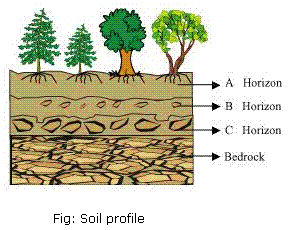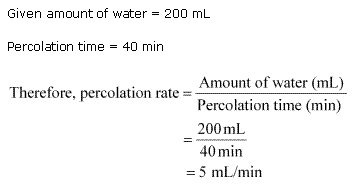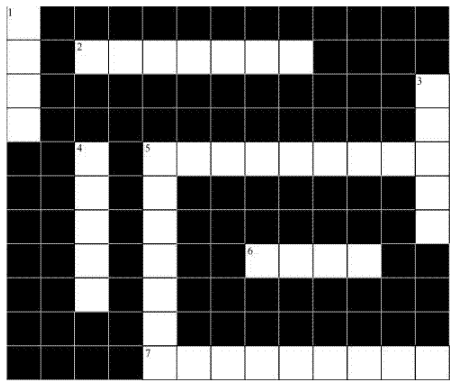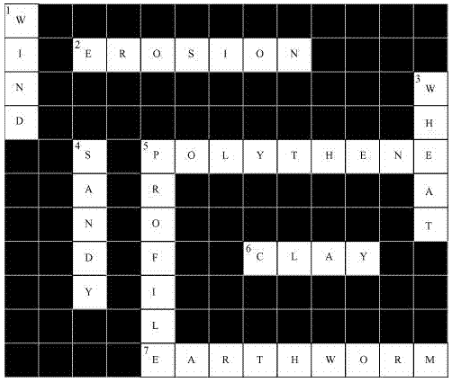NCERT Solutions Class 7 Science Chapter 9 Soil
Topics and Sub Topics in Class 7 Science Chapter 9 Soil:
| Section Name | Topic Name |
| 9 | Soil |
| 9.1 | Soil teeming with life |
| 9.2 | Soil profile |
| 9.3 | Soil types |
| 9.4 | Properties of soil |
| 9.5 | Moisture in soil |
| 9.6 | Absorptions of water by soil |
| 9.7 | Soil and crops |
Q1. Tick the most suitable answer in question 1 and 2.
In addition to the rock particles, the soil contains
(i) Air and water
(ii) Water and plants
(iii) Minerals, organic matter, air and water
(iv) Water, air and plants
Answer:
In addition to the rock particles, the soil contains
(iii) Minerals, organic matter, air and water.
Q2. The water holding capacity is the highest in
(i) Sandy soil
(ii) Clayey soil
(iii) Loamy soil
(iv) Mixture of sand and loam
Answer:
The water holding capacity is the highest in
(ii) Clayey soil
Q3. Match the items in Column I with those in Column II:
| Column I | Column II |
| (i) A home for living organisms | (a) Large particles |
| (ii) Upper layer of the soil | (b) All kinds of soil |
| (iii) Sandy soil | (c) Dark in colour |
| (iv) Middle layer of the soil | (d) Small particles and packed tight |
| (v) Clayey soil | (e) Lesser amount of humus |
Answer:
| Column I | Column II |
| (i) A home for living organisms | (b) All kinds of soil |
| (ii) Upper layer of the soil | (c) Dark in colour |
| (iii) Sandy soil | (a) Large particles |
| (iv) Middle layer of the soil | (e) Lesser amount of humus |
| (v) Clayey soil | (d) Small particles and packed tight |
Q4. Explain how soil is formed.
Answer:
Soil is formed through the process of weathering. Weathering is a process of physical breakdown and chemical decomposition of rocks and minerals near or at the surface of the earth. This physical and chemical decomposition is primarily done by wind, water, and climate. As a result of these processes, large rock pieces are converted into smaller pieces and eventually to soil.
Q5. How is clayey soil useful for crops?
Answer:
Following are the properties of clayey soil:
- It has very good water holding capacity.
- It is rich in organic matter.
For growing crops such as wheat, gram, and paddy, the soil that is good at retaining water and rich in organic matter is suitable. Therefore, clayey soils having these characteristics are useful for such kind of crops.
Q6. List the differences between clayey soil and sandy soil.
Answer:
| Clayey Soil | Loamy Soil |
| (i) It has much smaller particles. | (i) It has much larger particles. |
| (ii) It can hold good amount of water. | (ii) It cannot hold water. |
| (iii) It is fertile. | (iii) It is not fertile. |
| (iv) Air content is low. | (iv) Air get trapped between the particles. |
| (iv) Particles are tightly packed | (iv) Particles are loosely packed |
| (iv) Good for growing various crops. | (iv) Not suitable for growing crops. |
Q7. Sketch the cross section of soil and label the various layers.
Answer:

Q8. Razia conducted an experiment in the field related to the rate of percolation. She observed that it took 40 min for 200 mL of water to percolate through the soil sample. Calculate the rate of percolation.
Answer:

9. Explain how soil pollution and soil erosion could be prevented.
Answer:
Prevention of soil pollution:
The persistent build-up of toxic compounds in the soil is defined as soil pollution. To prevent soil pollution, its causes must be controlled.
- Reduce the use of plastics: Plastics and polythene bags destroy the fertility of soil. Hence, these should be disposed off properly and if possible, their use should be avoided.
- Industrial pollutants: Some waste products from industries and homes pollute soil. These pollutants should be treated chemically to make them harmless before they are disposed off.
- Insecticides: Other pollutants of soil include pesticides and insecticides. Therefore, excessive use of these substances should be avoided.
Prevention of soil erosion:
Removal of the upper fertile layer of the soil (top soil) by strong wind and flowing water is known as soil erosion. Following steps can be taken to reduce soil erosion:
- Mass awareness to reduce deforestation for industrial purposes.
- Helping local people to regenerate degrading forest.
- Planting trees.
10. Solve the following crossword puzzle with the clues given:

Across
2. Plantation prevents it.
5. Use should be banned to avoid soil pollution.
6. Type of soil used for making pottery.
7. Living organism in the soil.
Down
1. In desert soil erosion occurs through.
3. Clay and loam are suitable for cereals like.
4. This type of soil can hold very little water.
5. Collective name for layers of soil.
Answer:

Across
2. Plantation prevents it. → Erosion
5. Use should be banned to avoid soil pollution. → Polythene
6. Type of soil used for making pottery. → Clay
7. Living organism in the soil. → Earthworm
Down
1. In desert soil erosion occurs through. → Wind
3. Clay and loam are suitable for cereals like. → Wheat
4. This type of soil can hold very little water. → Sandy
5. Collective name for layers of soil. → Profile
NCERT Solutions for Class 7 Science – All Chapters
- Chapter 1 Nutrition in Plants
- Chapter 2 Nutrition in Animals
- Chapter 3 Fibre to Fabric
- Chapter 4 Heat
- Chapter 5 Acids, Bases and Salts
- Chapter 6 Physical and Chemical Changes
- Chapter 7 Weather, Climate and Adaptations of Animals to Climate
- Chapter 8 Winds, Storms and Cyclones
- Chapter 9 Soil
- Chapter 10 Respiration in Organisms
- Chapter 11 Transportation in Animals and Plants
- Chapter 12 Reproduction in Plants
- Chapter 13 Motion and Time
- Chapter 14 Electric Current and Its Effects
- Chapter 15 Light
- Chapter 16 Water: A Precious Resource
- Chapter 17 Forests: Our Lifeline
- Chapter 18 Wastewater Story